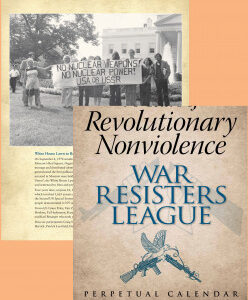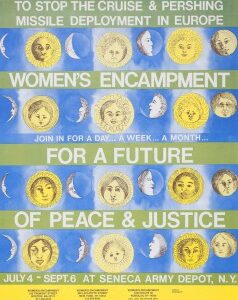Sex, Revolution, and the Sexual Revolution
About a century and a half ago, medicine and technology began to reduce the high price of sex in the United States and Western Europe. It became possible to imagine, at least, both an end to unwanted pregnancies and a cure for the known sexually transmitted diseases. (Of course, no one could guess at the time what new and deadlier STDs the future held.)
In response to those changes, a wide range of people began clamoring for parallel changes in sexual mores. Medical doctors, philosophers in the old disciplines and in the infant social sciences, and revolutionaries alike argued for greater sexual freedom for women and men. Almost immediately, however, counter-arguments arose, from conservatives and counter-revolutionaries but also from advocates of progressive social change, with some of the debates revolving around women’s political, social, and economic inequality.
Aside from those progressives whose sexual positions, so to speak, remained old-fashionedly conservative, the two opposing trends among those advocating change could be characterized, broadly speaking, as that of the sexual liberationists vs. the sexual protectionists. The former sought the right to have sex with whomever they pleased, and the latter sought the right not to have sex, except when and with whom they chose.
Among early feminists, for instance, for every argument for free love, like those put forward by English writer Mary Wollstonecraft, there was someone like suffragist Susan B. Anthony, arguing—in an era in which the law didn’t define a man’s forced sex with his wife as rape—that women’s autonomy resided in the ability to say no to sex, even with their husbands. In a somewhat separate development late in the 19th century, professionals in various fields began (rather timidly at first) advocating tolerance for homosexual men, homosexual acts, and, ultimately, for lesbians as well. During the turbulent years before and after the First World War, anarchist Emma Goldman and psychoanalyst Wilhelm Reich spoke for the liberationists, identifying sexual freedom with economic and political liberation, and in Reich’s case even linking sexual repression with fascism. Meanwhile, famed birth-control pioneer (and socialist) Margaret Sanger sided more with the protectionists; her contraceptive crusade sought not so much to expand sexual freedom as to shield married women from the consequences of their husband’s lust; she also promoted eugenics and wrote with scorn and contempt about prostitutes, young women who engaged in love affairs, and “habitual masturbators.”
Then came World War II and the unprecedented era of explosive technological and social change that followed it. The postwar years are now generally remembered as a period of political and social conservatism—think McCarthyism and the banning of the word “pregnant” from television, that new barometer of sexual mores. Yet in fact all the changes and demands for change that flowered in the 1960s were already in motion in the postwar ’40s and the ’50s. World War II resisters began refusing to pay war taxes in 1948, and Catholic Worker and War Resisters League activists first refused to take shelter during so-called civil defense drills in New York City in 1955. The civil rights movement achieved major victories with the 1954 Brown v. Board of Education Supreme Court decision that struck down “separate but equal” school segregation and the Montgomery, Ala., bus boycott a year later that ultimately ended segregation on public transportation. And in 1951 The Kinsey Report had informed the world that a Sexual Revolution (which had perhaps been accelerated in part by the wider use of condoms and penicillin during the war) was well under way.
An Era of Liberation
It is true, however, that all those changes came to full fruition during the ’60s. They also led directly to the new movements of the late ’60s and ’70s: first the women’s liberation movement, which was followed in short order by the gay liberation movement that would become the lesbian, gay, bisexual, and transgender (LGBT) movement, along with movements for the liberation of smaller sexual minorities, like adherents of cross-generational sex and sado-masochism. And as those movements ripened, the same opposing trends—liberationists vs. protectionists—arose that had existed during earlier stages of the Sexual Revolution.
Again, those demanding free sexual access for all tended to consist of members of the dominant group in society, that is, men, predominantly white, predominantly upper class, who had long chafed at the rules and conventions that barred them (theoretically, at least) from engaging in sex with categories of people including unwilling partners, young children and adolescents, people of their own sex (i.e., other men and boys), and respectable unmarried women of their own classes. On the whole, the protectionists tended to consist of members of those groups that had always been held as the rightful sexual property of the members of that dominant group, primarily women of their own class and people of color.
The most vociferous challenges to the Sexual Revolution came from segments of Second Wave feminism. Although the movement claimed to speak for all women, it was in fact as overwhelmingly white and middle-class as the era’s peace and student movements, and much of its theory was rooted in the lives and values of white, middle-class women. It did, however, expose much that had previously been hidden or ignored by a society in which men undeniably held more power than women did. Its critiques included new analyses of rape and the sexual abuse of children (the latter running directly counter to the segment of the gay men’s movement advocating liberation of inter-generational sex, or “man-boy love”) and, perhaps most influentially—and most controversially—opposition to pornography as a powerful factor in women’s subordination. By 1980, that analysis had created its own movement.
A Civil Rights Issue
Anti-pornography activists declared that the “graphic depiction of the sexual subordination of women” itself degraded women in the real world, and that its influence spread beyond its audience into the culture at large, turning women’s degradation into big business. In an attempt to avoid being labeled censors, a segment of the movement reconceived pornography as a violation of women’s civil rights. More than one municipality passed ordinances defining pornography as exactly that, theoretically providing its victims with the right to sue the perpetrators of such violations—that is, the purveyors of pornography.
But no sooner did the anti-porn movement gain steam and credibility, than an opposing tendency arose. Defining themselves “sex-positive feminists,” its members claimed that the anti-pornography movement both underplayed women’s authentic sexuality and agency as sexual beings, and exaggerated the impact and influence of pornography. Asserting that pornography was no more monolithic than mainstream culture, they declared that, while much of it was misogynist, often brutally so, individual works could appeal to women as well as men. As to the impact of pornography on culture, they pointed out that Madison Avenue’s tens or hundreds of thousands of commercials a year dwarfed all the productions of the porn business—and were watched, not only by men learning how to treat women, but by women and young girls learning how they should live and act and think.
Early in the 1980s, this division erupted into a head-on confrontation, in the course of which many anti-porn activists accused the sex-positive advocates of being bad feminists or not feminists at all. The conflict, which became known in Second-Wave Feminist history as the “Sex Wars,” bitterly divided the women’s movement, which appeared to lose much of the transformative power it had wielded during the previous decade.
The LGBT movement, on the other hand, retained its vitality and indeed continued to gather steam throughout the later years of the 20th century and into this one, toppling one barrier after another. As this is being written, some U.S. jurisdictions recognize same-sex marriage, and the two-decade “don’t ask, don’t tell” policy regarding homosexuals in the military is about to be countermanded by a more open acceptance of gay men and lesbians. (The latter move has not been welcomed as a progressive one by all segments of the movements for change, particularly anti-militarists.)
‘Where the Money Is’
The Sexual Revolution, in short, remains a work in progress. Certainly, large numbers of people in the United States and Europe—of almost all sexual preferences—lead vastly freer sex lives than their counterparts did a century ago. To what extent those changes have been accompanied by advances in freedom along other axes, however, is open to question, but it is also certain that women have not yet achieved equality, that we still live in a patriarchy, and that patriarchy continues to color every aspect of our lives, including our sex lives.
It’s also certain that patriarchy, the actually existing one in the global North, is inextricably mixed with capitalism. When a reporter asked the notorious Willie Sutton why he robbed banks, he answered, “Because that’s where the money is.” In this world, patriarchy—women’s subordination, including the sexualizing of that subordination in a wide range of media and venues—is where the money is. Ending that subordination may well require dismantling the capitalist economy and its racial, class, and other structures of subordination, and patriarchy itself.
Judith Mahoney Pasternak, who edited this magazine (under its former name) for 10 years, was one of the few members of New York Radical Feminists who took the “sex-positive” side of the so-called Sex Wars of the 1980s.

 WRL Perpetual Calendar
WRL Perpetual Calendar  Handbook for Nonviolent Campaigns, 2nd Edition
Handbook for Nonviolent Campaigns, 2nd Edition  Seneca Women's Peace Encampment Poster
Seneca Women's Peace Encampment Poster